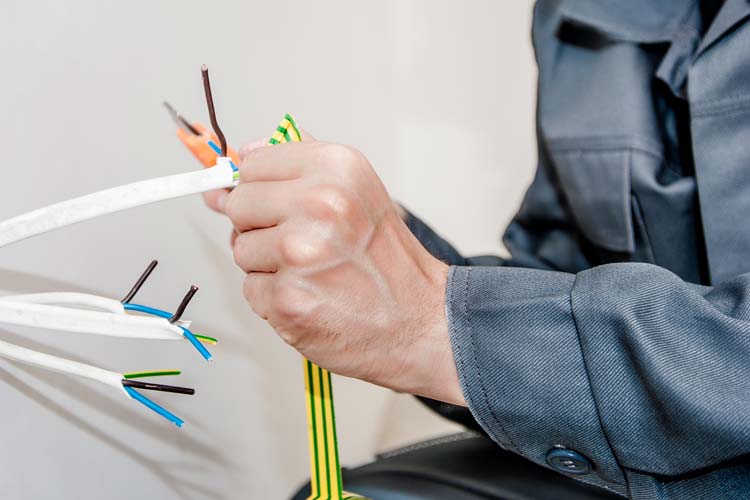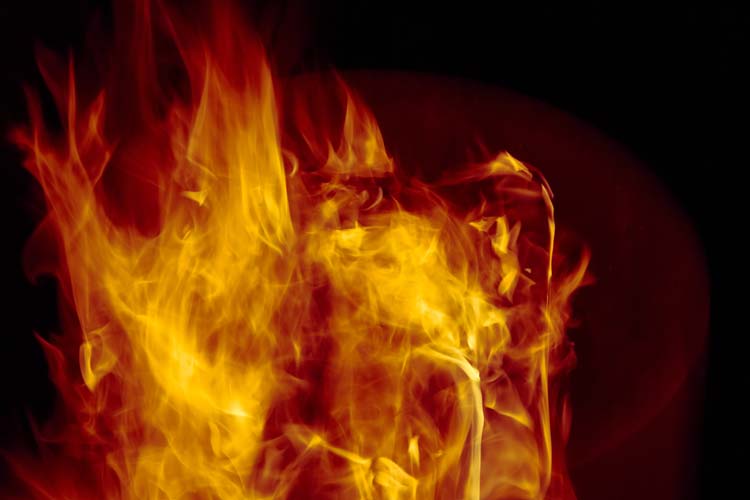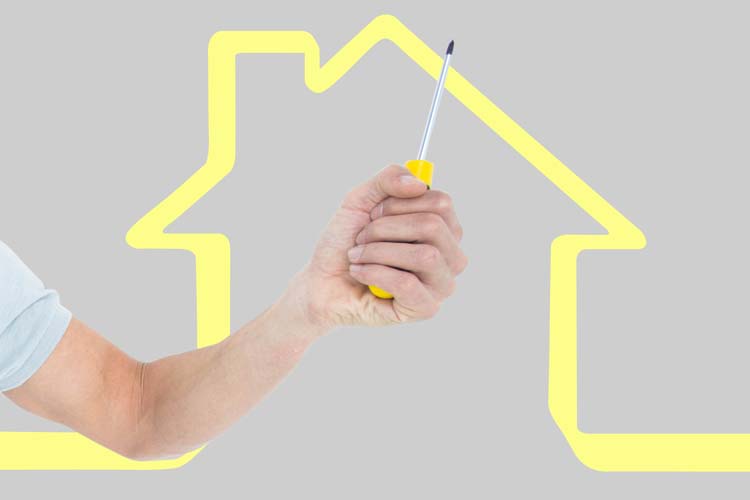As a private landlord, you are responsible for ensuring that your property is safe for your tenants to occupy. The health and safety regulations for rented properties have become more stringent in recent years. In addition to meeting your current legal obligations, it is important to keep up-to-date with changes to the law, which may affect you.
Your precise obligations will depend upon the type of property you own and the tenancy agreement. But whether you are renting out a studio flat, a detached property or a house in multiple occupation (HMO), you must always adhere to your safety responsibilities as a landlord. Doing so will protect both your tenants and your investment, while ensuring that your insurance is valid.

Gas
All gas equipment must be safely installed and maintained by a Gas Safe registered engineer. Annual safety checks should be conducted by a registered engineer on all appliances and flues and you should keep a record of the checks. You must supply new tenants with a copy of the gas safety check record before they move in or within 28 days of the check being carried out.
Any gas appliance that you own, and provide for your tenant’s use, is your responsibility. If your tenant supplies their own gas appliance, you are responsible for parts of the associated installation and pipework but not for the actual appliance.
Electrical Safety
Landlords must have the electrical installations in their rented properties inspected and tested by a qualified and competent person at least every 5 years. A report should be obtained from the person conducting the inspection and a copy supplied to the tenant.
This new legislation came into force on 1 June 2020 and applies to new tenancies from 1 July 2020 and existing tenancies from 1 April 2021.
Many accidental domestic fires in the UK are caused by electricity and faulty electrical products. Landlords must ensure that the electrical systems and electrical appliances supplied are safe. All electrical equipment provided must be marked with an appropriate CE symbol.
You should also issue your tenants with copies of instruction manuals for any appliances in the property so that they can use them safely.
Between tenancies or before you market your property, it is advisable to conduct a visual inspection, during which you should:
- Check for broken or missing switches
- Check for broken or missing sockets
- Check that each socket or appliance is in working order
- Inspect all appliances for damage
- Ensure that all cables and plugs are free from damage
Fire Safety
A fire can be a devastating event, threatening the lives of your tenants and ruining your property. You must do everything you can to reduce the risk of fire.

Alarms
The current regulations in England for single occupancy homes require private sector landlords to install at least one smoke alarm on every floor and a carbon monoxide alarm in any room with a fuel burning appliance, such as a wood burning stove.
This is the minimum requirement; you may choose to install additional alarms in your rental property. The few seconds that other alarms might save when tenants need to escape, could be the difference between life and death.
You are obliged to ensure that the alarms are in proper working order at the start of each new tenancy. However, you are not responsible for testing the alarms during the tenancy.
For their own safety, your tenants should check the alarms at least once each month and replace the batteries once or twice a year, if the alarms are battery-powered. They should report any issues with the equipment to you or to your letting agent as soon as possible.
If you’re letting a large house in multiple occupation (HMO), you are required to provide mains operated alarms and fire extinguishers.
Clear escape routes
Landlords must ensure that tenants can escape easily in the case of a fire as well as make repairs to the fabric of the property (such as ceilings) in a timely manner, so fire can’t spread quickly to other rooms.
Communal areas such as landings, stairways and kitchens must be kept clear of obstacles and combustibles so that people can escape quickly and the risk of fire in the escape routes is mimimised.
Furnishings
Landlords must ensure that all of the furniture provided is “fire resistant”. Furniture should display a permanent label to show that it meets the specified ignition resistance levels. This label should be displayed on both new and second-hand furniture.
The regulations apply to things like sofas, sofa beds, mattresses and even bean bags. Items such as carpets, curtains and duvets are not included.
Written risk assessment
All blocks of flats and large HMOs in England and Wales must have a fire risk assessment. The Regulatory Reform (Fire Safety) Order 2005 requires that you are properly able to assess potential fire risks if you conduct the assessment yourself. This means you must either educate yourself to be considered a competent person to make an assessment or engage a third party, such as a qualified fire risk assessor.
Even if you just rent out a single flat and are not obliged to carry out a risk assessment, it’s advisable to conduct one anyway. The assessment will enable you to identify any issues you might otherwise have missed, including hazardous substances, obstructions and furniture which does not meet the required safety standards.
For more information, read our article ‘Landlord’s Fire Safety Regulations and Risk Assessment for Rental Properties’.
Mould from damp and condensation
Mould, which is caused by damp, can negatively impact the health of your tenants so you must deal promptly with any mould and damp which is present at a property.
There are three types of damp to be aware of; condensation, penetrating damp and rising damp. All types of damp can cause mould to form.
Condensation
Condensation is the most common form of damp in rental properties. It forms when excess moisture in the air comes into contact with a cold surface, such as a window or wall. Inadequate ventilation, heating or insulation will make condensation worse. It might be possible to undertake alterations to your property to alleviate condensation. You should advise your tenants how to reduce moisture indoors. Installing a dehumidifier will certainly improve the situation.
Penetrating damp and rising damp
These are more serious issues and will require repairs to your guttering, plumbing or the structure of the building. You should seek the help of a professional to identify the cause of the issue and then conduct the necessary repairs.
Security
Make sure there are appropriate locks on doors and windows and that boundaries are well maintained. You should also consider putting in some external security lighting. Make sure you know who has keys to external doors and that only the tenants, property manager and landlord are able to enter the property.
Repairs
If the property falls into a state of disrepair, this could cause health and safety issues for your tenants. As a landlord, you are legally obliged to ensure the property is fit for habitation at the start of the tenancy and maintained in good condition.

Legionnaire’s Disease
You may not have heard of Legionnaires disease but as a landlord, you need to be aware of all potential dangers to your tenant’s health.
Legionnaires disease is a form of pneumonia caused by the Legionella bacteria found in water. Its presence is more likely in large water systems such as cooling towers or air conditioning systems but Legionella bacteria can also multiply in water systems and storage tanks in residential properties, especially where there is water stored between 20°C and 45°C.
As a landlord, you should assess the risk to your tenants of exposure to Legionella. A simple assessment may show that there are no real risks and no further action is needed.
You can consider the risks from domestic hot and cold water systems low if:
- There is daily water usage, this is inevitable if your property is occupied
- The cold water comes directly from the mains (not stored water tanks)
- The hot water is fed from instantaneous heaters (e.g. combi boilers or electric showers) OR low volume water heaters where the water is stored above 50°C
You should be careful if your property is left vacant for extended periods. If your property is vacant you should implement a flushing regime or drain the system entirely if your property is to remain vacant for long periods.
The Housing Health and Safety Rating System
The Housing Health and Safety Rating System (HHSRS) is a risk-based evaluation which local authorities use to deem whether a property presents health and safety hazards.
A HHSRS inspection will be carried out on your property is it is requested by your tenants or if, having inspected other properties nearby, the local council decide your property may be at risk.
An environmental health officer will attend the property and assess if there is a risk of harm due to the hazards in the property. Any hazards in your home are rated as ‘category 1’ or ‘category 2’. If your property displays any examples of a category 1 hazard, the local council is obliged to take action, if necessary the council can carry out the works themselves and charge the landlord.




